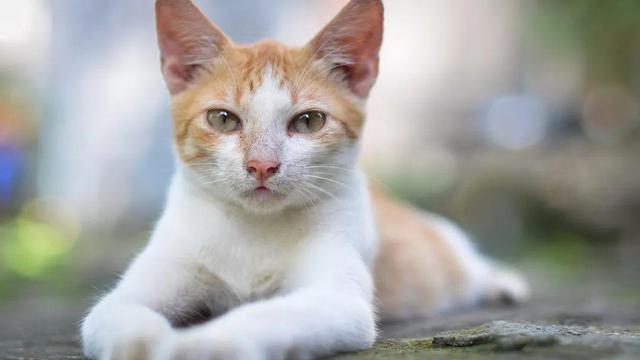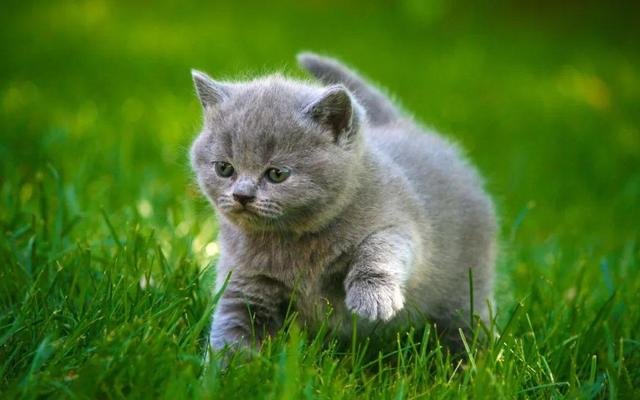【往期回顾】

【本期内容】
A look at feline domestication
猫的驯化研究

More than 47 million American households own at least one cat, with two on average per household, according to the American Pet Products Association. As these statistics - plus the cat’s status as the internet’s favorite animal - indicate, the house cat is perhaps more beloved around the world than ever before. But many cat lovers know very little about the history of these animals they take into their families. In fact, the human-cat relationship is thought to extend back about 10,000 years, from a time when wildcats first wandered into rural villages.
根据美国宠物产品协会的数据,超过4700万美国家庭至少养一只猫,平均每家养两只。正如这些统计数据所表明的那样,再加上猫作为互联网上最受欢迎动物的地位,家猫在世界各地可能比以往任何时候都更受欢迎。但许多爱猫人士对他们带进家里的这些动物的历史知之甚少。事实上,人与猫的关系被认为可以追溯到大约10000年前,从野猫第一次游荡到农村的时候开始。

The Origins of the House Cat
家猫的起源
While there are a number of wildcat subspecies - European and Scottish wildcats, for example - today’s domestic cat is thought to have descended from the North African wildcat, also called the Near Eastern wildcat. “There are many subspecies of wildcat, and all these cats can actually interbreed, so it’s rather hard to figure out the story now,” explains Dr. Leslie Lyons, professor and head of the Feline Genetics Laboratory at the University of Missouri, College of Veterinary Medicine. “The one that was sampled and actually supported that they are progenitors of the domestic cat is the North African wildcat.” In addition to North Africa, this subspecies may have lived throughout the Levant region, ancient Anatolia and Mesopotamia. These cats could adapt to a variety of habitats and survived by hunting rodents, reptiles, and birds.
虽然有许多野猫亚种,例如欧洲和苏格兰的野猫,但今天的家猫被认为是北非野猫的后裔,也被称为近东野猫。密苏里大学兽医学院猫科动物遗传学实验室主任、教授Leslie Lyons博士解释道:“野猫有很多亚种,所有这些猫实际上都可以杂交,所以现在很难弄清楚家猫的来源。”。“被采样并实际证明它们是家猫祖先的是北非野猫。”除了北非,这个亚种可能生活在整个黎凡特地区、古代安纳托利亚和美索不达米亚。这些猫可以适应各种各样的栖息地,并通过捕食啮齿动物、爬行动物和鸟类而生存。
Today’s domestic cats are physically very similar to their wild ancestors. “Domestic cats and wildcats share a majority of their characteristics,” Lyons says, but there are a few key differences: wildcats were and are typically larger than their domestic kin, with brown, tabby-like fur. “Wildcats have to have camouflage that’s going to keep them very inconspicuous in the wild,” Lyons says. “So you can’t have cats with orange and white running around - they’re going to be snatched up by their predators.” As cats were domesticated, they began to be selected and bred for more interesting colorations, thus giving us today’s range of beautiful cat breeds.
今天的家猫在身体上与它们的野生祖先非常相似。莱昂斯说:“家猫和野猫有着共同的大部分特征。莱昂斯说:“野猫必须有伪装,这将使它们在野外非常不显眼。” “所以你不能让橙色和白色的猫到处乱跑,它们会被捕食者抓走的。”随着猫被驯化,它们开始被挑选和繁殖,以获得更有趣的颜色,从而为我们提供了今天的一系列漂亮的猫品种。

The Beginnings of Domestication
驯化的开端
“Our genetic evidence, our archaeological evidence, and our geology all tell us that cats were probably not domesticated more than 8,000 to 10,000 years ago,” Lyons explains. It was during this time period that humans first began farming in large numbers in parts of the Middle East, the Indus River Valley region in Pakistan, and the Yellow River Valley region in China. Based on the available evidence, scientists and historians theorize that when farmers began to cultivate grain, they attracted rodents, which in turn lured wildcats out of their habitats and into human civilizations.
莱昂斯解释道:“我们的基因证据、考古证据和地质学都告诉我们,猫可能在8000到10000多年前没有被驯化过。”正是在这一时期,人类首次在中东部分地区、巴基斯坦的印度河流域和中国的黄河流域大量务农耕种。根据现有证据,科学家和历史学家推断,当农民开始种植粮食时,他们会吸引啮齿动物,反过来又会引诱野猫离开栖息地,进入人类文明。
“Once the cats were in the villages, the idea is that people would have wanted to keep them around, because the cats killed rodents,” explains David Grimm, deputy news editor at Science magazine and author of the book Citizen Canine: Our Evolving Relationship with Cats and Dogs. By killing their prey, cats offered protection for crops and food storage in these early farming communities.
《科学》杂志新闻副主编、《家犬:我们与猫狗的进化关系》(另一译名《猫狗的逆袭》)一书的作者大卫·格里姆解释道:“一旦猫进入村庄,人们就会想把它们留在身边,因为猫会杀死啮齿动物。”通过杀死猎物,猫为这些早期农业社区的作物和食物储存提供了保护。
Because this early human-cat relationship was so mutually beneficial, it is often said that cats “domesticated themselves,” meaning they voluntarily started living among humans and adopted behaviors that would allow them to continue their appealing new lifestyle. “Not only did [these wildcats] have mice and rats to hunt, but if they were friendlier, they were also potentially getting table scraps, and maybe even protection from people,” Grimm says. “So it would really behoove them to be a lot tamer than their feral counterparts.”
由于这种早期的人猫关系是互惠互利的,人们经常说猫是“自我驯化”的,这意味着它们自愿开始与人类生活在一起,并接纳了使它们能够继续其有吸引力的新生活方式的行为。格里姆说:“(这些野猫)不仅有老鼠可以捕食,而且如果它们更友好,它们还可能得到餐桌上的残羹剩饭,甚至可能免受人类的伤害。” “因此,它们真的应该比野生同类驯服得多。”

Useful, Godlike, Wicked: Evolving Perceptions of Cats
有用的、神性的、邪恶的:猫的进化认知
As they became more entrenched in their roles as rodent patrol and grain protectors, cats’ bond with humans became stronger. Archaeologists have found evidence of this relationship in the form of ancient bones in places like China and the Mediterranean island of Cyprus, where in 2004, Jean-Denis Vigne made one of the most significant discoveries yet: the remains of a cat buried beside its owner in a grave dating to around 7500 B.C.
随着它们作为啮齿动物巡逻队和谷物保护者的角色越来越牢固,猫与人类的联系也越来越牢固。考古学家在中国和地中海塞浦路斯岛等地以古代骨骼的形式发现了这种关系的证据。2004年,让-丹尼斯·维涅在那里发现了迄今为止最重要的发现之一:一只猫的遗骸埋在主人身边的一个坟墓里,可以追溯到公元前7500年左右。
“What’s significant about the burial is that this is a village where people used to bury their loved ones under their homes. And when archaeologists were digging under a home, they found a burial which had a person and a cat,” Grimm explains. The cat and human skeletons were buried about a foot apart, placed so that they faced one another and surrounded by carved seashells. “That suggested that even very early on, there may have been this very close relationship between people and cats,” he says.
格里姆解释道:“这次葬礼的重要意义在于,这是一个人们过去常常把亲人埋葬在家里的村庄。当考古学家在家里挖掘时,他们发现了一个有一个人和一只猫的墓葬。”猫和人的骨架被埋葬在相距约一英尺的地方,放置得相互面对,周围是雕刻的贝壳。他说:“这表明,即使在很早的时候,人和猫之间也可能存在着非常密切的关系。”
In Egypt, the early domestic cat’s roles as helper and protector launched it to peak popularity between around 1950 B.C. (when the cat first appears in Egyptian art) through the Roman period. “Again, they were protecting grain, and they were killing snakes and scorpions,” Grimm explains. “So they became revered to the point where they actually started to be conflated with gods in ancient Egypt.”
在埃及,早期家猫作为助手和保护者的角色使其在公元前1950年左右(猫首次出现在埃及艺术中)到罗马时期达到了顶峰。格里姆解释道:“他们又一次保护粮食,杀死蛇和蝎子。” “因此,他们受到了尊敬,以至于他们实际上开始被与古埃及的神相提并论。”

One common practice in Egypt at this time - which has proven useful today for scientists studying the house cat’s origins - was the mummification of cats as sacred offerings. By around 600 B.C., Lyons explains, cats were being mummified by the thousands. “It became a business, actually,” she says. “We know that the cats were probably tamed, and that people were breeding them, but they were purposely sacrificing them to make them into mummies so that people could buy them and do offerings to the gods.”
埃及当时的一种常见做法是将猫制成木乃伊作为圣物,这在今天被证明对研究家猫起源的科学家很有用。莱昂斯解释说,到公元前600年左右,成千上万的猫被制成了木乃伊。“事实上,它变成了一门生意,”她说。“我们知道这些猫可能被驯服了,人们正在饲养它们,但他们故意牺牲它们,把它们做成木乃伊,这样人们就可以购买它们并向上帝献祭。”
In 2012, Lyons coauthored a study that compared the mitochondrial DNA sequences of excavated Egyptian cat mummies to the sequences of various subspecies of modern domestic cat. The results were fascinating: “All of the mummies had the same DNA sequence that was common to the Middle East,” she explains, “[and] the cats that are living [in Egypt] today have the same sequence as the mummies, which probably means that the cats that were the mummies are their ancestors. So they’re descendants of the cats of the Pharaohs.” This study offered the first genetic evidence that the cats being sacrificed in ancient Egypt were, in fact, domestic cats, further supporting the theory that domestication occurred prior to this period.
2012年,莱昂斯与人合著了一项研究,将挖掘出的埃及猫木乃伊的线粒体DNA序列与现代家猫各亚种的序列进行了比较。结果令人着迷:“所有的木乃伊都有中东常见的相同DNA序列,”她解释道,“今天生活在埃及的猫和木乃伊有相同的序列,这可能意味着木乃伊中的猫是它们的祖先。所以它们是法老猫的后代。” “这项研究提供了第一个基因证据,证明在古埃及被献祭的猫实际上是家猫,进一步支持了驯化发生在这一时期之前的理论。
Following its Egyptian heyday, the domestic cat’s path to worldwide popularity was far from a smooth one, particularly in Europe. “In the Middle Ages, especially around the 1200s and 1300s, cats start to be associated with things like witchcraft,” Grimm says. “And you have a lot of cat-killing, cats being thrown into bonfires, being tortured and hung, because they were believed to be evil and the incarnation of the devil.” Pope Gregory IX, who crusaded against pagan religions in medieval Europe, led the charge. His campaign against cats was so effective that this purge lasted for centuries, and by 1700, they had all but disappeared in certain areas.
在埃及的鼎盛时期之后,家猫在世界范围内的流行之路远非一帆风顺,尤其是在欧洲。格里姆说:“在中世纪,尤其是在1200年代和1300年代左右,猫开始与巫术等事物联系在一起。”。“还有很多猫被杀,猫被扔进篝火,被折磨和绞死,因为它们被认为是邪恶的,是魔鬼的化身。”教皇格雷戈里九世领导了这项指控,他曾在中世纪欧洲讨伐异教徒。他反对猫的运动非常有效,以至于这场清洗持续了几个世纪,到1700年,猫在某些地区几乎消失了。

From Outdoor Hunters to Indoor “Fur-Babies”
从户外猎人到室内“毛皮宝宝”
“It wasn’t until probably the 1700s or 1800s that cats on a large scale started to come back into favor,” Grimm explains. But from that point, it was still a long road to the “house cat” as we know it. While cats were cared for as outdoor pets in the 19th and early 20th centuries, “the majority of cats being indoor animals is actually a very recent development,” he says. “And that’s because kitty litter wasn’t invented until 1940.”
格里姆解释道:“大概直到18世纪或19世纪,猫才开始大规模地重新受到青睐。”但从那时起,要成为我们所知的“家猫”还有很长的路要走。虽然猫在19世纪和20世纪初被当作户外宠物来照顾,但“大多数猫都是室内动物,这实际上是最近的发展,”他说。“那是因为猫砂直到1940年才被发明。”
Grimm notes that as cats developed this closer relationship with humans, their legal status also began to change. “Up until about 100 years ago or so, cats and dogs were legally so worthless that they weren’t even considered property,” he says. Now, not only are they legally protected as property, they receive additional protection under anti-cruelty laws as well as natural disaster evacuation laws, which were first implemented after Hurricane Katrina.
格里姆指出,随着猫与人类建立了更密切的关系,它们的合法地位也开始改变。他说:“直到大约100年前,猫和狗在法律上都是毫无价值的,甚至不被视为财产。”现在,他们不仅作为财产受到法律保护,还受到反虐待法和自然灾害疏散法的额外保护,这些法律在卡特里娜飓风后首次实施。
The 20th century has been an incredible period of change for the domestic cat. “This transition from them being outside animals to coming inside is a major turning point in them being considered more than just animals or pets, but becoming members of the family,” Grimm says.
对于家猫来说,20世纪是一个令人难以置信的变革时期。格里姆说:“它们从户外动物到室内动物的转变是一个重要的转折点,使它们不仅仅被认为是动物或宠物,而是成为家庭的一员。”

【Source】www.petmd.com
【Translated by】Spark Liao (廖怀宝)
【Illustration】From Bing
请点击,查看更多原文信息。